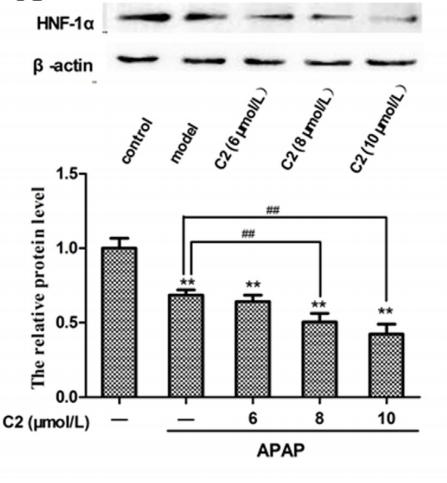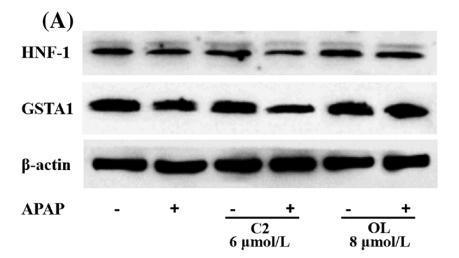HNF1A Antibody - #AF7545
| Product: | HNF1A Antibody |
| Catalog: | AF7545 |
| Description: | Rabbit polyclonal antibody to HNF1A |
| Application: | WB |
| Cited expt.: | WB |
| Reactivity: | Human, Mouse |
| Prediction: | Zebrafish, Bovine, Horse, Sheep, Dog, Chicken, Xenopus |
| Mol.Wt.: | 56kDa, 70 kDa; 67kD(Calculated). |
| Uniprot: | P20823 |
| RRID: | AB_2843909 |
Related Downloads
Protocols
Product Info
*The optimal dilutions should be determined by the end user. For optimal experimental results, antibody reuse is not recommended.
*Tips:
WB: For western blot detection of denatured protein samples. IHC: For immunohistochemical detection of paraffin sections (IHC-p) or frozen sections (IHC-f) of tissue samples. IF/ICC: For immunofluorescence detection of cell samples. ELISA(peptide): For ELISA detection of antigenic peptide.
Cite Format: Affinity Biosciences Cat# AF7545, RRID:AB_2843909.
Fold/Unfold
Albumin proximal factor; Hepatic nuclear factor 1 alpha; Hepatic nuclear factor 1; Hepatic transcription factor 1 alpha; Hepatic transcription factor 1; Hepatocyte nuclear factor 1-alpha; HNF 1; HNF 1A; HNF-1-alpha; HNF-1A; hnf1a; HNF1A_HUMAN; Interferon production regulator factor; LF B1; LF B1 hepatic nuclear factor; LFB 1; LFB1; LFB1 hepatic nuclear factor; Liver specific transcription factor LF B1; Liver specific transcription factor LFB1; Liver-specific transcription factor LF-B1; Maturity onset diabetes of the young 3; MODY 3; MODY3; TCF 1; TCF-1; TCF1; Transcription factor 1; Transcription factor 1 hepatic;
Immunogens
A synthesized peptide derived from human HNF1A, corresponding to a region within the internal amino acids.
- P20823 HNF1A_HUMAN:
- Protein BLAST With
- NCBI/
- ExPASy/
- Uniprot
MVSKLSQLQTELLAALLESGLSKEALIQALGEPGPYLLAGEGPLDKGESCGGGRGELAELPNGLGETRGSEDETDDDGEDFTPPILKELENLSPEEAAHQKAVVETLLQEDPWRVAKMVKSYLQQHNIPQREVVDTTGLNQSHLSQHLNKGTPMKTQKRAALYTWYVRKQREVAQQFTHAGQGGLIEEPTGDELPTKKGRRNRFKWGPASQQILFQAYERQKNPSKEERETLVEECNRAECIQRGVSPSQAQGLGSNLVTEVRVYNWFANRRKEEAFRHKLAMDTYSGPPPGPGPGPALPAHSSPGLPPPALSPSKVHGVRYGQPATSETAEVPSSSGGPLVTVSTPLHQVSPTGLEPSHSLLSTEAKLVSAAGGPLPPVSTLTALHSLEQTSPGLNQQPQNLIMASLPGVMTIGPGEPASLGPTFTNTGASTLVIGLASTQAQSVPVINSMGSSLTTLQPVQFSQPLHPSYQQPLMPPVQSHVTQSPFMATMAQLQSPHALYSHKPEVAQYTHTGLLPQTMLITDTTNLSALASLTPTKQVFTSDTEASSESGLHTPASQATTLHVPSQDPAGIQHLQPAHRLSASPTVSSSSLVLYQSSDSSNGQSHLLPSNHSVIETFISTQMASSSQ
Predictions
Score>80(red) has high confidence and is suggested to be used for WB detection. *The prediction model is mainly based on the alignment of immunogen sequences, the results are for reference only, not as the basis of quality assurance.
High(score>80) Medium(80>score>50) Low(score<50) No confidence
Research Backgrounds
Transcriptional activator that regulates the tissue specific expression of multiple genes, especially in pancreatic islet cells and in liver (By similarity). Binds to the inverted palindrome 5'-GTTAATNATTAAC-3'. Activates the transcription of CYP1A2, CYP2E1 and CYP3A11 (By similarity).
Nucleus.
Liver.
Belongs to the HNF1 homeobox family.
Research Fields
· Cellular Processes > Cellular community - eukaryotes > Signaling pathways regulating pluripotency of stem cells. (View pathway)
· Human Diseases > Endocrine and metabolic diseases > Maturity onset diabetes of the young.
References
Application: WB Species: Sample: hepatocytes
Application: WB Species: human Sample: HepG2 cells
Restrictive clause
Affinity Biosciences tests all products strictly. Citations are provided as a resource for additional applications that have not been validated by Affinity Biosciences. Please choose the appropriate format for each application and consult Materials and Methods sections for additional details about the use of any product in these publications.
For Research Use Only.
Not for use in diagnostic or therapeutic procedures. Not for resale. Not for distribution without written consent. Affinity Biosciences will not be held responsible for patent infringement or other violations that may occur with the use of our products. Affinity Biosciences, Affinity Biosciences Logo and all other trademarks are the property of Affinity Biosciences LTD.


